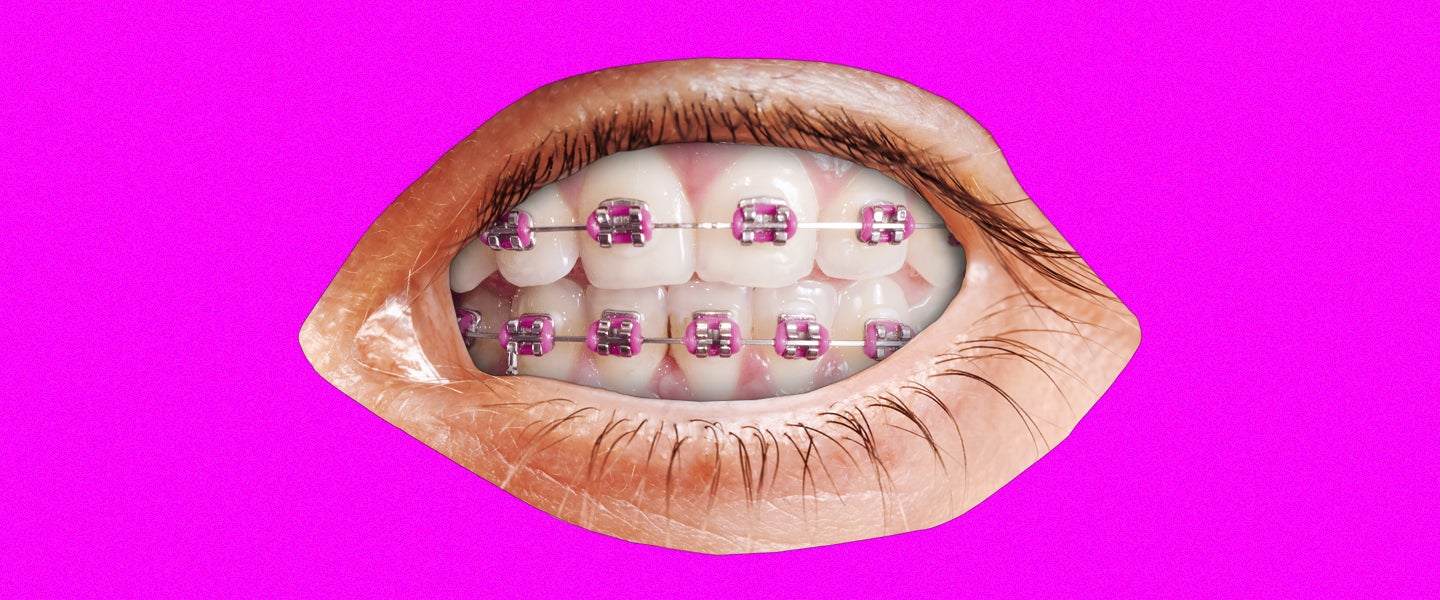I can’t see a thing without my glasses. Neither can much of the world: 40 percent of Americans are nearsighted today, and by 2050, that number will grow to an estimated 50 percent of the world population. There are lots of reasons why: We’re not going outside enough, for example, and we can’t unglue our eyes from these damn screens.
I work on a computer all day, and then come home, completely avoid the outdoors and hold my phone six inches from my face for approximately five and a half hours every evening. The next generation is cursed, too: We’re passing down our bad vision and bad habits to our kids.
The eyeball is a malleable thing, though. Most theories about myopia (nearsightedness) posit that it occurs as a result of our eyes adjusting to process peripheral light. Exposure to blue light, like what emanates from our computers and smartphones, reshapes our eyes to focus on shorter wavelengths. Essentially, we’ve trained our eyes to focus on nothing but that sweet, sweet internet content.
But as it turns out, the eye is pliable enough that it can be, essentially, molded back to its proper form. This is where orthokeratology — cornea reshaping — comes in.
What Is Orthokeratology, Anyway? And How Does Orthokeratology Work?
I first heard about this through my own optometrist, who said I could correct my rapidly regressive myopia with something called “eye braces.” Skeptical, I called up another optometrist, Dr. Ryan S. Stybel of Positive Eye Ons in West Hollywood, California, and Look! Optometry in Manhattan Beach, California. According to Stybel, the whole “eye braces” thing isn’t quite accurate. There’s no “bracing” involved, though there is a process of correcting — hence the shared prefix “ortho” in orthokeratology and orthodontia.
Orthokeratology involves rigid, gas-permeable contact lenses molded to reshape our cornea, he explains: “With this contact lens, we can prescribe it to our patient, they sleep in that lens at nighttime. It generally reshapes the cornea, temporarily, to no prescription.” The effects last about 24 hours, and increase with regular nightly wear.
“We do recommend wearing it every night. That’s where the bad analogy of a retainer kind of comes in. So basically, instead of wearing glasses or contacts during the day, you can sleep in your contact lens and correct your vision for the day.” If the lenses aren’t worn for a few weeks, the eye will return to its previous state.
The biggest benefit of orthokeratology, though, is not just that it allows for someone to avoid glasses or traditional contact lenses. More than that, orthokeratology prevents myopia from worsening.
“When a kid comes to me and they’re a –1, instead of saying, ‘Hey, here’s a regular pair of glasses or regular, daily disposable contact lenses that you’re going to wear, and I’ll see you in a year when your eyes get worse and give you new glasses,’ we say, ‘I’m going to give you this thing called orthokeratology. It’s a contact lens you’ll sleep in at nighttime so when you wake up in the morning, you have perfect vision, but it’s also going to stop the regression of your myopia, or at least slow it down so that you’re not going to be become a –4,’” says Stybel.
How Much Does Orthokeratology Cost?
Given the preventative benefits of orthokeratology, it is increasingly being used among children. While adults can still utilize the lenses, only about one in ten of Stybel’s orthokeratology patients is an adult.
The process typically costs between $1,000 and $4,000. Dr. Kambiz Silani of Beverly Hills, California, estimated $1,300 when I reached out. Dr. Stybel wasn’t comfortable sharing the costs of orthokeratology at his practices, but he explains that the cost is dictated by the length of treatment. “It’s an upfront fee, typically, a global fee of myopia control, because what that entails is it goes through a process,” he explains. “We’re reshaping the patient’s eyes.”
“We’re not just giving them a pair of glasses to wear on the front of their face for a year. … So patients may go through four or five visits for the first three months as the process is happening,” Stybel adds. According to Silani, there are few risks to orthokeratology, and most are comparable to those of traditional lenses. For example, irritation might occur, but it should cease when the lens is removed.
Most vision insurance does not cover the cost of orthokeratology, so for now, most people will be stuck with frames. But as children continue to spend less time outdoors and more time looking at screens, orthokeratology will grow as a practice. Get ready to shell out some cash so your future kid’s vision doesn’t degrade into blindness.

